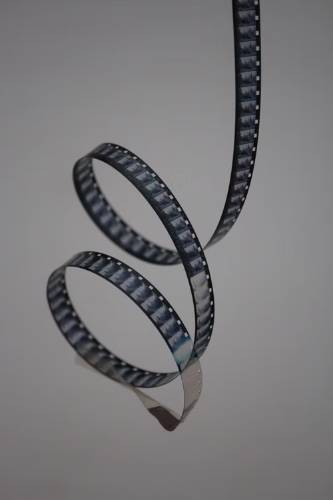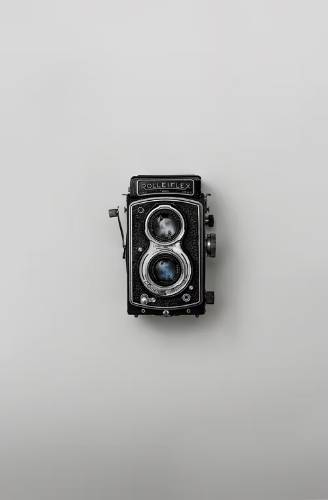Technology and image quality have improved to the point where today’s movies are more vibrant than black and white movies. Black-and-white movies, however, do have certain advantages. Popular contemporary films like “Malcolm & Marie,” “The Lighthouse,” and “Roma” all make use of black and white to convey different feelings and ideas. In the same way, some directors in Old Hollywood chose black-and-white movies even though Technicolor was the norm at the time. Black and white films were the standard in the early days of the film industry.
Stacker searched IMDb’s massive database for the best black-and-white films of all time, and the result was a diverse selection covering many genres, decades, and nations. Movies that were just partially in black and white were not considered for this category. But “Schindler’s List” and other black-and-white films with only a few color moments were given the go light. In addition, at least 10,000 votes were needed for each film to be included. If there is a tie for first place, the film with the most votes will go up. The best 100 black-and-white movies ever made are listed below, from the most recent to the oldest.
These are the finest classic movies that have ever been made
Past the end of the Yellow Brick Road and Sunset Boulevard. The most people care about who is the GOAT. From Sunset Boulevard to Down Under, we’re all about the golden age of Hollywood. Here are the bounds: There will be no 1) silent films and 2) films produced after 1980. When you finish reading this collection, you will undoubtedly be overcome with emotion.
Couples like Meg Ryan and Tom Hanks, Sanaa Lathan and Taye Diggs, Kate Hudson and Matthew McConaughey, etc. Some of the most memorable romantic comedy duos were Clark Gable and Claudette Colbert’s early efforts in the genre. It Happened One Night, directed by Frank Capra and starring the two great actors, is widely regarded as the first romantic comedy in film history. Black-and-white classic from 1935 about a socialite who gives her reporter admirer the scoop he’s been looking for.
Sidney Poitier, Claudia McNeil, and Ruby Dee all made appearances in the first play written by an African-American woman to be presented on Broadway, which Hansberry authored. After two years, original cast members Diana Sands, Ivan Dixon, and others adapted Hansberry’s narrative for the big screen and won a slew of awards. The family in the groundbreaking civil rights film A Raisin in the Sun of mid-century Chicago is counting on a life insurance payout and the absence of fraud to secure their financial security true story of world war II.
Black and white movies: The Last Picture Show
High school kids in a small town in Texas strive to balance their family ties with their dreams of leaving home in this drama from 1971. After director Peter Bogdanovich and actor Orson Welles investigated the advantages of black-and-white filmmaking, the picture starring Timothy Bottoms and Jeff Bridges was released in monochrome in black and white film depicts.
Bogdanovich told the Salt Lake Tribune that Orson Welles said that black and white enhanced the quality of all performances. “Because you don’t pay attention to things like blonde hair and blue eyes. What interests you is the performance, not the people who put it on. Plus, it helps you record the time more accurately.”
Young Frankenstein
In 1974, Mel Brooks directed a spoof movie called “Young Frankenstein” that was shot in black and white as an homage to classic Hollywood monster movies. His producers were first reluctant to the apparently uncommercial option because the bulk of the industry had already moved to color. Brooks said to Conan O’Brien that the filmmakers had tried to trick him into shooting in color by promising to release the film in black and white. The response from Brooks was as follows: “No, because you’ll use me, say that, and then risk a lawsuit by printing everything in color in order to rescue the company. Shooting on black and white Agfa film is required.”
Bull in a Stump
In this Martin Scorsese-directed 1980 film, Robert De Niro plays American boxer Jake LaMotta, whose destructive actions strain his relationships with his loved ones. There were eight Oscar nods for the film, and Robert De Niro took home two for his performance and the editing.

In the early stages of production, Scorsese filmed some color video of Robert De Niro in a boxing ring. Scorsese’s advisor pointed out that the era’s gloves would have been maroon or black, and that this influenced the director’s decision to make the picture in black and white cinema academy awards.
Manhattan
Woody Allen is a major lover of the classics, so it makes sense that his film, which is supposed to be a love letter to the island’s vibrant hues, would be shot in black and white cinema’s finest moments of greatest films.
To pay respect to Allen’s cinematic recollections of the city of the same name, “Manhattan” (1979) was shot entirely in black and white. Allen approached cinematographer Gordon Willis with the idea since he had already formed positive connections with the city in black and white. After some time had passed, he filmed the monochrome film Shadows and Fog’s wonderful life.
Schindler’s list
In Steven Spielberg’s Holocaust drama “Schindler’s List,” businessman Oskar Schindler (Liam Neeson) becomes more infuriated by the Nazi persecution of his Jewish employees. The dreary black-and-white film is one of the finest of all time, and it won seven Oscars in 1994, including best picture and best cinematography.
Cinematographer Janusz Kaminski told The Guardian that he opted to shoot the whole film in black and white in order to give the scenes a more realistic, factual feel. According to Spielberg, “In the darkness of the Holocaust, there was no hope. Color is the first and most obvious indication of life to my eyes. Therefore, it is essential that a Holocaust film be shown in monochrome.”
Color is brought to Spielberg’s otherwise monochromatic picture by the little girl in the red raincoat, who represents a victim of the liquidation of the Kraków ghetto film noir.
